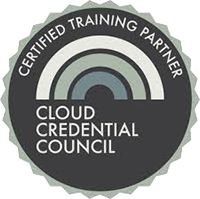Increase the Value of Service Support With
ITSM Advisory Consulting.
ITSM Advisory Consulting.
Drive consistent customer-focused innovation and experiences for your customers. An effective ITSM strategy will enable an organization to provide increased quality of support to the business while driving innovations that increase customer experiences.
Transform the way your
service support organization works and
see the impact on your business and your bottom line.
service support organization works and
see the impact on your business and your bottom line.
When you align your business strategy and goals with people, processes, technology and data, you have the ability to optimize and improve service support operations, and as your strategic partner, we’ll be there for you every step of the way.
At XA Systems, our management consulting services deliver actionable solutions to real service support challenges that span across people, technology, data, and finances. Utilizing an ITSM approach to our engagements, our consultants provide service support organizations with strategic leadership and transformation insights, obtained through years of experience. Together, we work with you to deliver thoughtful, practical guidance and recommendations.
When large organizational, procedural, or technological shifts occur, the impact is felt across all levels of a business. With the right direction and leadership, this leads to a highly motivated and productive workforce, streamlined processes, automated workflows, cost savings, and a solid path towards innovation to guide your service support organization into the future.
ITSM/ITIL best practice implementation that resolves business challenges and drives digital transformation initiatives.
Today, an increasing number of organizations are leveraging their ITSM tool to do more than just IT. Managing HR issues, handling Facilities Service Request, onboarding new employees, providing a portal for requesting supplies, even tracking non-IT related assets, are all examples of ways to leverage the investment made in an ITSM tool and improve ROI as well as provide the needed ability to track and report on these services. The real value though lies beyond the use of the ITSM tool.
The underlying set of practices that make up ITSM including the adaption of a service lifecycle, the establishment of policies, processes and well-defined roles and responsibilities along with the implementation of Continual Service Improvement allows organizations to achieve both incremental and large-scale improvements in service quality, efficiency, and effectiveness. Not just for IT, but for your business.
Our consulting engagements are based on a continual improvement methodology that includes the measurement of results through KPIs backed by performance analytics:
Phase 1: Assessment and Planning
- Current State Assessment: We begin with a thorough assessment of the organization’s existing ITSM processes, tools, and capabilities. This involves identifying current strengths, weaknesses, opportunities, and threats (SWOT analysis) in the context of ITSM practices.
- Stakeholder Engagement: Engagement with key stakeholders across the organization enables the understanding of expectations, pain points, and objectives. This ensures that the ITSM strategy is aligned with business goals and addresses real needs.
- Benchmarking and Gap Analysis: A comparison of the current ITSM practices against industry standards and best practices will identify gaps. Tools like maturity models are utilized to quantify the current state and desired future state.
- Strategic Planning: A strategic plan will outline the vision, goals, and objectives of the ITSM transformation. This includes setting priorities, defining key initiatives, and creating a roadmap with milestones.
Phase 2: Design and Implementation
- Process Design and Improvement: We design or redesign ITSM processes to address identified gaps and inefficiencies. This may involve adopting new practices or optimizing existing ones in areas such as incident management, change management, and service level management.
- Tool Selection and Integration: We identify and implement ITSM tools that support the redesigned processes. Considerations include automation capabilities, integration with other systems, and scalability.
- Change Management and Training: A change management plan is developed to manage the transition, addressing resistance and ensuring buy-in from stakeholders. Training programs are necessary to equip staff with the necessary skills and knowledge to execute the new processes.
- Pilot and Rollout: If necessary, changes are implemented in a controlled manner, starting with a pilot phase to test and refine the new processes and tools before a full-scale rollout.
Phase 3: Continuous Improvement and Governance
- Performance Monitoring and Reporting: We work with the client to establish metrics and KPIs to monitor the performance of ITSM processes and tools. Regular reporting ensures transparency and supports decision-making.
- Review and Optimization: A periodic review of ITSM practices against the set objectives and industry standards ensures continued alignment with goals and objectives. This includes conducting periodic audits and assessments to identify areas for further improvement.
- Governance and Risk Management: Implementing governance structures ensures that out client’s ITSM practices are consistent and aligned with business objectives. Risk management processes are necessary to identify and mitigate potential threats to service delivery.
- Culture and Capability Building: We help to foster a culture of continuous improvement and professional development within the IT organization. This can come in the form of certifications and training in ITSM best practices to build internal capabilities.






